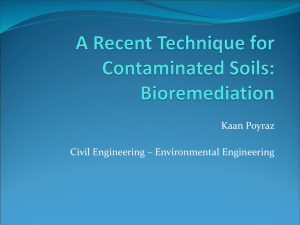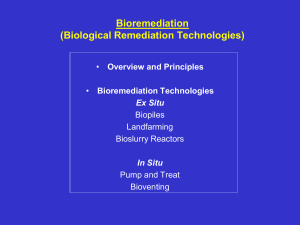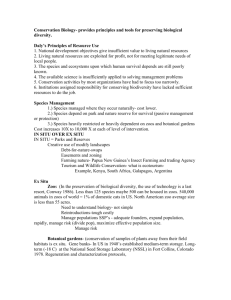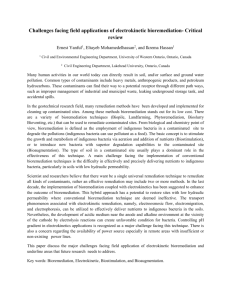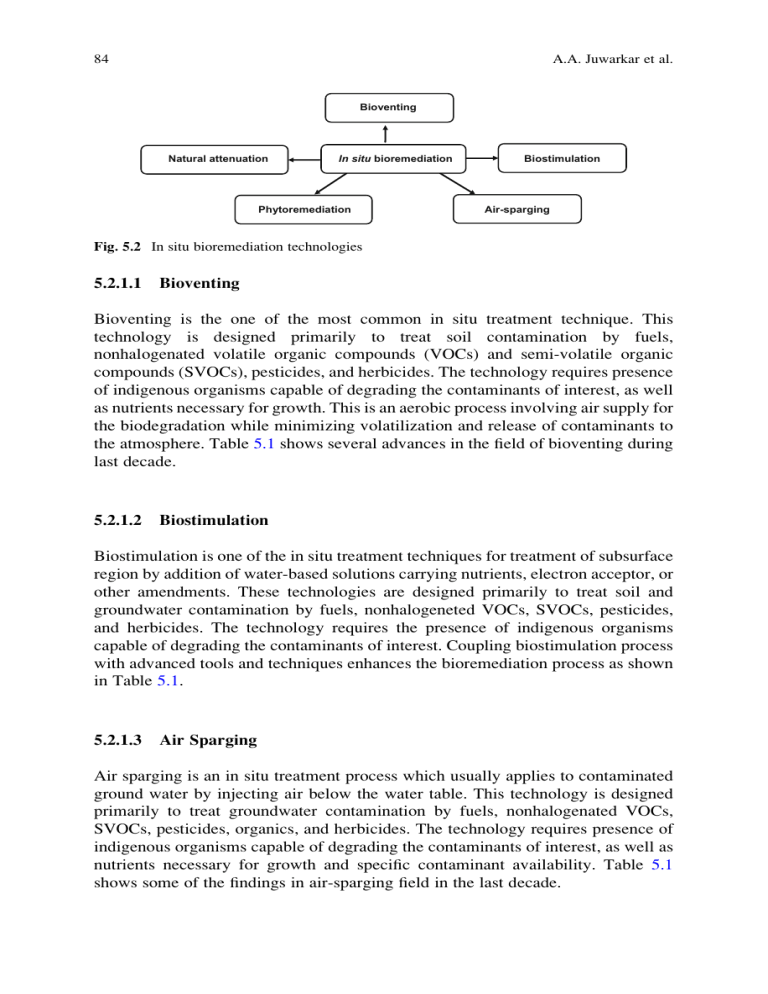
84 A.A. Juwarkar et al. Bioventing Natural attenuation In situ bioremediation Phytoremediation Biostimulation Air-sparging Fig. 5.2 In situ bioremediation technologies 5.2.1.1 Bioventing Bioventing is the one of the most common in situ treatment technique. This technology is designed primarily to treat soil contamination by fuels, nonhalogenated volatile organic compounds (VOCs) and semi-volatile organic compounds (SVOCs), pesticides, and herbicides. The technology requires presence of indigenous organisms capable of degrading the contaminants of interest, as well as nutrients necessary for growth. This is an aerobic process involving air supply for the biodegradation while minimizing volatilization and release of contaminants to the atmosphere. Table 5.1 shows several advances in the field of bioventing during last decade. 5.2.1.2 Biostimulation Biostimulation is one of the in situ treatment techniques for treatment of subsurface region by addition of water-based solutions carrying nutrients, electron acceptor, or other amendments. These technologies are designed primarily to treat soil and groundwater contamination by fuels, nonhalogeneted VOCs, SVOCs, pesticides, and herbicides. The technology requires the presence of indigenous organisms capable of degrading the contaminants of interest. Coupling biostimulation process with advanced tools and techniques enhances the bioremediation process as shown in Table 5.1. 5.2.1.3 Air Sparging Air sparging is an in situ treatment process which usually applies to contaminated ground water by injecting air below the water table. This technology is designed primarily to treat groundwater contamination by fuels, nonhalogenated VOCs, SVOCs, pesticides, organics, and herbicides. The technology requires presence of indigenous organisms capable of degrading the contaminants of interest, as well as nutrients necessary for growth and specific contaminant availability. Table 5.1 shows some of the findings in air-sparging field in the last decade.
